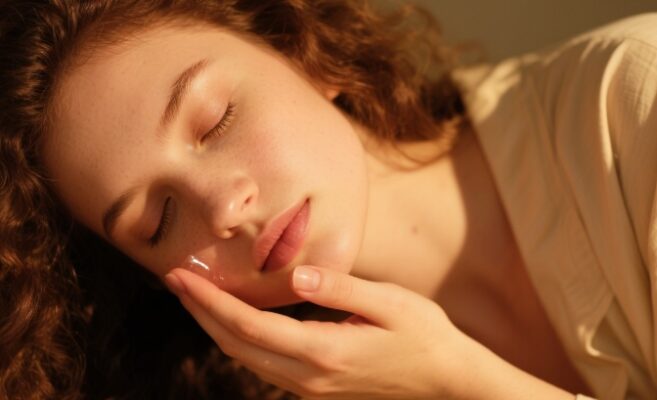In the fields of cosmetics, industrial cleaning, and more, surfactants play an indispensable core role—they act as emulsifiers in skincare products and foaming agents in cosmetic products. But among thousands of surfactants, which are the current market’s most favored “star ingredients”?
This article compiles the current Top 18 most popular surfactants application list, ranging from Cocamidopropyl Betaine widely used in hair products to the powerful cleaning agent Sodium Laureth Sulfate (SLES), and Stearic Acid with both emulsifying and stabilizing effects…
Each entry includes historical usage levels, product registration data, and market trend analysis. Whether you want to understand ingredient properties or gain insights into industry dynamics, this list will reveal the answers one by one.
NO.1 Cocamidopropyl Betaine
Derived from low-cost coconut oil, this mild yet highly effective surfactant is a versatile amphoteric surfactant. It functions in detergency, emulsification, dispersion, wetting, sterilization, antistatic, and softening.
Historical maximum usage: Rinse-off products (30%), leave-on products (2.96%).
Data from the U.S. Environmental Working Group (EWG) database shows Cocamidopropyl Betaine appears in 132 products. According to the European Chemicals Agency (ECHA), the ingredient exhibits excellent biodegradability, making it highly environmentally friendly. Additionally, it has low acute oral toxicity (LD50) and does not cause skin sensitization at concentrations below 10%, with no genotoxicity.
Application Cases:
– A well-known French shampoo uses Cocamidopropyl Betaine as a key ingredient, combined with Caprylyl/Capryl Glucoside and Sodium Lauryl Sulfate. It is also used in baby foam bath products, where its mild, non-irritating nature is gentle on infants’ delicate skin.
– Shampoos: Mizhisu Multi-Effect Nourishing Shampoo, L’Oréal Hyaluronic Acid Shampoo, Fushiting Coal Tar Lotion Shampoo.
– Body washes: Mizhisu Beauty Fragrance Body Wash, Pasión Pure Comfort Series Body Wash.
– Cleansers: INOHERB Gentiana Soothing Cleanser, SK-II Men’s Facial Cleanser, Winona Soothing Oil-Control Cleansing Foam, Mentholatum Oil-Control Refreshing Cleansing Foam.

NO.2 Sodium Laureth Sulfate
Referred to as SLES, this powerful cleanser and foaming agent may cause irritation to the skin and eye mucosa; sensitive skin should avoid long-term use.
Historical maximum usage: Rinse-off products (50%), leave-on products (14%).
Sodium Laureth Sulfate (SLES) is a core cleaning ingredient in the global daily chemical industry, widely used in various personal care products for its efficient detergency and foaming ability. Below is an analysis of international application data, product cases, and technical characteristics:
According to the EWG Skin Deep database, products containing SLES cover shampoos (1,656 products), body washes (1,424 products), and facial cleansers (287 products), with 647 of these certified by EWG. The Cosmetic Ingredient Review (CIR) concludes that SLES is safe at appropriate concentrations.
Application Cases:
– Shampoos: Pantene Pro-V Series Shampoo (SLES concentration 8-12%), Head & Shoulders Anti-Dandruff Shampoo (SLES combined with ZPT, SLES concentration ~10%), Dove Deep Nourishing Body Wash (SLES concentration 5-8%), Kérastase Blonde Absolu Bain Lumière Shampoo.
– Facial cleansers: SK-II Men’s Revitalizing Cleanser (SLES concentration 5-7%), formulated with Sodium Lauroyl Sarcosinate to form an “APG + Betaine” dual-core cleansing system.
– Body washes: Sebamed (Germany) Baby Foam Bath (SLES concentration below 3%), combined with panthenol and oat extract; Dow Chemical’s Sensory Blast Body Wash.
For sensitive skin consumers: Avoid products with SLES concentrations >10%, and check for Ecolabel or USDA Biobased certifications.
NO.3 Stearic Acid
Also known as C18 acid, it is rarely used alone as a surfactant. In cosmetics, it often acts as an emulsifier, opacifier, stabilizer, and viscosity regulator.
Historical maximum usage: Rinse-off products (68.3%), leave-on products (27.304%).
In the European and American markets, “naturally claimed” products containing Stearic Acid will increase to 51% by 2025, with brands labeling “plant-derived stearic acid” or “RSPO certification.”
Authoritative statistics show that global cosmetic registrations containing Stearic Acid exceed 277,000, with a 3.8% increase in the past year, mainly in facial creams (29.6%), cleansers (21.3%), and sunscreen products (18.7%). According to the Cosmetic Ingredient Review (CIR), Stearic Acid is safe at concentrations ≤25%, and does not damage the skin barrier when used in leave-on products at ≤25% or rinse-off products at ≤68%.
Application Cases:
– Cleansers: Estée Lauder Nutritious Rosy Glow 2-in-1 Cleanser (Stearic Acid concentration 8-12%), Kiehl’s Ultra Facial Cream (Stearic Acid concentration 5-7%).
– Foundation creams: IPSA The Time Reset Foundation (Stearic Acid concentration 3-5%) combined with Dimethicone; Sooryehan (Korea) Radiance Sun Cushion Foundation.
– Body washes: Sebamed (Germany) Baby Foam Bath, Aveda Scalp Care Essence.
For sensitive skin consumers: Avoid products with Stearic Acid concentrations >15%, and prioritize formulas combined with Allantoin or Dipotassium Glycyrrhizinate.

NO.4 Popular Cosmetic Surfactant:Cocamide DEA
A non-ionic surfactant with no cloud point, it is easily soluble in water, low in irritation, and readily biodegradable. It offers excellent foaming, foam stabilization, penetration, detergency, hard water resistance, and thickening properties. However, note that Cocamide DEA must not be used in products containing nitrosating agents, as it may form carcinogenic nitrosamines.
According to a report by a market intelligence agency, the global market for Cocamide DEA reached $261 million in 2023. The primary consumer markets are Europe, China, and Japan.
Application Cases:
– Shampoos: Laggie Refreshing Silicone-Free Shampoo contains this ingredient.
– Cleansers: Ettusais (a youth-oriented brand under Shiseido, Japan) Zero Pore Cleanser includes Cocamide DEA.
– Feminine washes: Intimaliasan (Germany) Anti-Allergy Intimate Cleanser contains Cocamide DEA, combined with cottonseed oil and Cocamidopropyl Betaine.
– Body washes: NOVELLA Fragrance Moisturizing Body Wash adds Cocamide DEA, combined with Lauric Acid, Myristic Acid, and Glycerin.
NO.5 Cocamide MEA
Chemically known as Cocoyl Monoethanolamide, it is a mild foaming agent commonly used in cleansers and body washes. It exhibits excellent foaming, emulsifying, and stabilizing properties, producing rich foam. Additionally, it has low irritation to the skin and eyes, making it suitable for sensitive skin.
According to the International Cosmetic Ingredient Safety Assessment Index, the historical maximum usage of Cocamide MEA in cosmetics is 16% in whole-body rinse-off products, 0.01% in leave-on products, 0.7% in facial (including neck) leave-on products, and 0.728% in eye rinse-off products.
QYResearch estimates the 2024 global market size of Cocamide MEA at approximately $236 million. Furthermore, as consumer resistance to sulfate-based surfactants grows, Cocamide MEA—an important milder alternative—has gained market favor.
Application Cases:
– Shampoos: O’Garlie Anti-Dandruff Shampoo, L’Oréal Ginger Shampoo, Pantene Pro-V Series Shampoo, Head & Shoulders Refreshing Oil-Control Shampoo, Revlon Ginger Shampoo.
NO.6 Sodium Lauroyl Sarcosinate
This low-toxicity, low-irritation ingredient is a common choice for safe cosmetics. It also boasts excellent biodegradability, good compatibility with other ingredients, and antibacterial and anti-corrosive properties. This surfactant produces rich foam without causing skin roughness and leaves hair soft and manageable.
In 2022, the global market for Sodium Lauroyl Sarcosinate reached $72 million. Major manufacturers include Croda, Changsha Puji Biotechnology, Tinci, Galaxy, and Huzhou Ouli Biotechnology. Currently, China is the world’s largest producer of Sodium Lauroyl Sarcosinate.
Application Cases:
– Body washes and cleansers: Bioderma Atoderm Nicotinamide Moisturizing Body Gel, Lab Series Skincare for Men Moisturizing Energizing Cleanser, Christian Dior Hydra Life Essential Cleansing Foam, Melvita Honey Cleansing Gel.
– Shampoos: Aoyuan Ginger Shampoo, Davines Natural Tech Volumizing Shampoo, Sephora Volumizing Shampoo.
– Toothpaste: Colgate Toothpaste.
NO.7 Sodium Lauryl Sulfate
Referred to as SLS, it has excellent emulsifying, foaming, wetting, and detergency properties. It is generally used as a solubilizer, wetting agent, foaming agent, or detergent. However, high concentrations or long-term exposure may cause skin or mucosal irritation.
According to the Technical Guidelines for Cosmetic Safety Assessment, the maximum usage of Sodium Lauryl Sulfate is 80.3% inwhole-body rinse-off products, 5% in eye rinse-off products, 2.5% inleave-on products, and 2% in eye leave-on products. The Cosmetic Ingredient Review (CIR) recommends concentrations not exceeding 50% in rinse-off products and 50% in leave-on products.
Application Cases:
– Cleansers: Givenchy Météorites Noir Ultimate Cleanser, containing 1-2% Sodium Lauryl Sulfate; Nivea Deep Cleansing Facial Cleanser (combined with other ingredients).
– Toothpaste: Crest 3D White Toothpaste uses Sodium Lauryl Sulfate as a foaming agent to enhance cleaning efficacy.
– Body washes: Some formulations of Dove Classic Body Wash contain Sodium Lauryl Sulfate, usually combined with other surfactants.
– Shampoos: Certain L’Oréal Hyaluronic Acid Moisturizing Shampoo products include Sodium Lauryl Sulfate.
NO.8 Ammonium Lauryl Sulfate
This widely used sulfate surfactant acts as a cleanser and foaming agent, effectively removing oil and producing rich foam. Historical maximum usage: Rinse-off products (43.548%).
Relevant data shows that products using this ingredient total over 97,000 historically, with nearly 44,000 valid registrations currently, a year-on-year increase of 2.6%.
Application Cases:
– Shampoos: Ryo Water Glow Nourishing Bird’s Nest Shampoo, Plant Story Lavender Shampoo.
NO.9 Lauric Acid
Also known as dodecanoic acid, this saturated fatty acid typically appears as white needle-like crystals or powder.
In 2023, the global market for Lauric Acid reached $2.54 billion, primarily in personal care and cosmetics. It is a major component of coconut oil and palm kernel oil (45-55%) and is used in soap-based cleansers and shampoos for its cleaning, foaming, and thickening properties.
Application Cases:
– Cleansers: Chanel Mousse Confort Gentle Cleansing Foam, SK-II Facial Treatment Cleanser, Kiehl’s Calendula Herbal-Extract Toner, Shiseido Senka Perfect Whip Cleanser, Lancôme Galatée Confort Cleansing Milk.
NO.10 Myristic Acid
This fatty acid is found in nutmeg, palm oil, cocoa butter, tallow, and spermaceti. It has extensive applications as a fragrance ingredient, opacifier, surfactant, cleanser, and emulsifier.
Historical maximum usage: Rinse-off products (35.845%), leave-on products (16%).
Myristic Acid is a core ingredient in soap-based cleansers. Globally, it is widely used in cleaning and emulsifying applications.
Application Cases:
– Dove Botanical Fermented Beauty Body Wash (Japanese version): Myristic Acid combined with Lauric Acid for strong cleaning power while maintaining moisture.
– Nivea Men’s Moisturizing Cream: Myristic Acid regulates product texture and aids in cleaning surface skin oils.
– ARSOA Anessa White Soap: Myristic Acid combined with Palmitic Acid and Stearic Acid, suitable for deep cleaning of combination skin.
NO.11 Decyl Glucoside
This ingredient combines properties of both non-ionic and anionic surfactants, with low surface tension, rich foam, good stability, and wetting power. It is resistant to strong acids and alkalis, compatible with various surfactants, non-toxic, harmless, non-irritating, and rapidly and completely biodegradable.
In 2024, the global market for this ingredient reached $68 million, commonly used in high-end European and American skincare products.
Application Cases:
– Kiehl’s Ultra Facial Cleanser: Decyl Glucoside combined with Glycerin and Squalane for clean yet moisturized skin.
– Burt’s Bees Baby Bee Shampoo & Wash: Decyl Glucoside combined with Cocoyl Glucoside, suitable for babies’ delicate skin.
– The Body Shop Hemp Face Protector: Decyl Glucoside used for emulsification and thickening while reducing formula irritation.
NO.12 Cocoyl Glucoside
This green surfactant offers detergency, foaming, foam stabilization, emulsification, dispersion, solubilization, wetting, and penetration abilities. It is resistant to acids and alkalis with low irritation to skin and eyes. However, its cleaning power is relatively weak, so it is generally used with other surfactants.
Cocoyl Glucoside is an ECOCERT-certified green ingredient, primarily used in eco-friendly personal care products.
Application Cases:
– Ecover Zero Dishwasher Tablets: Cocoyl Glucoside as the main surfactant.
– Burt’s Bees Naturally Nourishing Shampoo: Cocoyl Glucoside combined with honey extract for clean hair with reduced frizz.
– Avène Soothing Special Care Cleanser: Cocoyl Glucoside combined with Sodium Lauroyl Glutamate, suitable for sensitive skin.
NO.13 Sodium Lauroyl Glutamate
This amino acid-based surfactant is mild, safe, and non-irritating. It offers good foaming and cleaning power without over-stripping the skin. Additionally, it has excellent moisturizing properties, leaving skin soft and nourished. It is a core ingredient in high-end amino acid cleansers.
Application Cases:
– Shiseido Senka Perfect Whip Cleanser: Sodium Lauroyl Glutamate combined with Sodium Cocoyl Glycinate, suitable for oily and combination skin.
– Elta MD Foaming Facial Cleanser: Sodium Lauroyl Glutamate combined with Bromelain for gentle oil dissolution.
– Freeplus Mild Cleansing Cream: Sodium Lauroyl Glutamate combined with multiple amino acids, suitable for sensitive skin.
NO.14 Sodium Cocoyl Glycinate
A major component of human skin collagen, it is often used in cosmetics as a cleanser and skin conditioner. It produces smooth, elastic foam, leaving skin feeling refreshed and non-tight. The global market for Sodium Cocoyl Glycinate exceeds $500 million, primarily used in high-end cleansers and body washes.
Application Cases:
– Sulwhasoo Concentrated Ginseng Renewing Soap: Sodium Cocoyl Glycinate combined with various plant extracts for clean yet soothed skin.
– SK-II Facial Treatment Cleanser: Sodium Cocoyl Glycinate combined with Pitera™.
NO.15 C12-20 Alkyl Glucoside
This mild cleanser offers moderate cleaning efficacy and thickening ability. It is a common thickener and cleanser in high-end European and American skincare products, with a global market growth rate exceeding 8% annually.
For example, both Avène Soothing Moisturizing Cleanser and Lancôme Galatée Confort Cleanser contain this ingredient.
Application Cases:
– Avène Soothing Moisturizing Cleanser: C12-20 Alkyl Glucoside combined with Glycerin for a gentle cleaning system.
– Lancôme Galatée Confort Cleanser: C12-20 Alkyl Glucoside combined with Lauric Acid for balanced cleaning and moisturizing.
– Clarins Hydra-Essentiel Day Cream: C12-20 Alkyl Glucoside used to adjust emulsion texture and enhance smoothness.
NO.16 Potassium Cocoyl Glycinate
This is an amino acid-based surfactant that combines cleansing, moisturizing, and mildness properties.
However, its cleansing power is moderate, and it achieves basic cleaning by binding to and emulsifying oils and dirt.
It is suitable to be combined with non-ionic or amphoteric surfactants to reduce the irritation caused by a single surfactant. Additionally, adding glycerin or hyaluronic acid can be considered to prevent moisture loss.
Application Cases:
Shiseido Deep Cleansing Oil-Control Facial Cream: Potassium Cocoyl Glycinate is the core ingredient, combined with rhyolite volcanic mud to enhance oil-control effects, suitable for oily skin.
Freeplus Mild Cleansing Cream: It uses Potassium Cocoyl Glycinate as the main cleansing agent, combined with Disodium Lauryl Sulfosuccinate to improve foaming properties, and adds glycerin and plant extracts to reduce tightness after cleansing.
OHBT Amino Acid Plant Extract Cleanser: It is compounded with Sodium Lauroyl Sarcosinate and Sodium Methyl Cocoyl Taurate to form a low-irritation cleansing base. Meanwhile, it contains French Damask rose essence and Spanish olive squalane to neutralize dryness after cleansing.
NO.17 Sodium Methyl Cocoyl Taurate
This ingredient belongs to sulfonate-based surfactants, focusing on mild cleansing and low irritation. It has good hard water resistance and can maintain stable cleansing effects even in high-calcium water environments.
Its cleansing power is balanced, capable of effectively removing oils and dirt from the skin.
It is suitable to be compounded with amino acid surfactants or amphoteric surfactants (such as betaines) to enhance cleansing power and reduce overall irritation. Alternatively, homogenization technology can be used to make the surfactant form tight micelles, reducing transdermal penetration.
Application Cases:
Kiehl’s Amino Acid Shampoo: It is compounded with Sodium Coco-Sulfate, and wheat amino acids and hydrolyzed wheat protein are added to reduce irritation to the scalp.
Xiyun Multi-Effect Gum-Protecting Toothpaste: It replaces traditional SLS (Sodium Lauryl Sulfate) and is compounded with Cocamidopropyl Betaine to reduce irritation to oral mucosa.
OHBT Amino Acid Plant Extract Cleanser: It works synergistically with Potassium Cocoyl Glycinate, suitable for sensitive skin.
NO.18 Popular Cosmetic Surfactant:Ammonium Laureth Sulfate (ALS for short)
As an anionic surfactant, Ammonium Laureth Sulfate is mainly characterized by strong cleansing power and rich foam. Moreover, it has strong cleansing ability and can quickly emulsify oils, especially effective in removing heavy oils (such as cleansers for oily skin, oil-control shampoos, body washes, etc.), with rich foam and a cool sensation during use.
It has good solubility, dissolving excellently in various cosmetic bases, making it easy to formulate. However, its irritation is slightly higher than that of amino acid-based and sulfonate-based surfactants, so it needs to be compounded with mild ingredients to reduce skin irritation.
Application Cases:
Pantene Pro-V Repair Shampoo: It uses ALS as the main cleansing agent, compounded with Cocamidopropyl Betaine and panthenol (provitamin B5) to improve dryness after washing.
Head & Shoulders Oil-Control Anti-Dandruff Shampoo: ALS is compounded with Cocamidopropyl Betaine, and combined with Zinc Pyrithione (ZPT) for anti-dandruff, reducing excessive degreasing.
Dove Nourishing Moisturizing Body Wash: ALS is compounded with Sodium Lauroamphoacetate, and glycerin and petrolatum are added to enhance moisturizing effects.
Leecosmetic: Using raw materials from internationally renowned companies
Leecosmetic is a leading cosmetics manufacturer. It provides high – quality cosmetics products at very competitive prices and with low minimum order quantities.
We offer a range of services, such as private label cosmetics manufacturing, OEM/ODM manufacturing, and provide a complete product supply solution for small and medium – sized cosmetics brands.
As a fast – growing private label cosmetics manufacturer, Leecosmetic has been using raw materials from internationally renowned companies in a safe and efficient manner.
Contact: https://leecosmetic.com/contactus/

